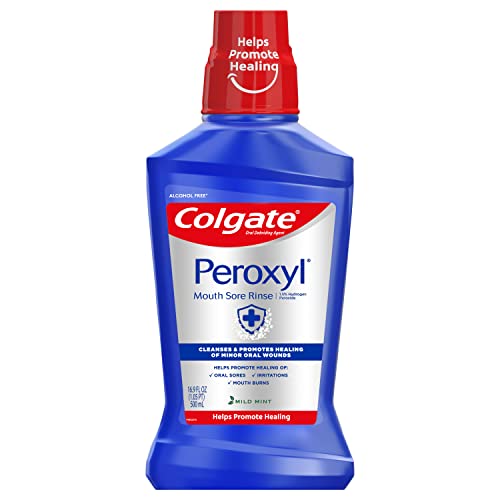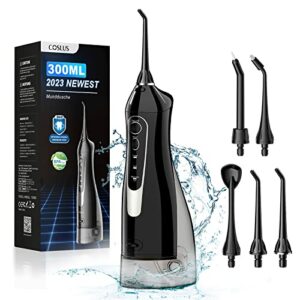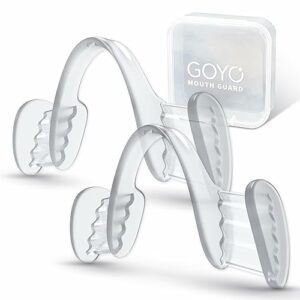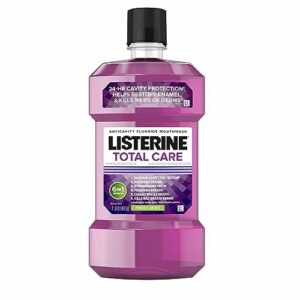In this step-by-step guide, we will show you how to properly use mouthwash to combat gum disease. We understand how challenging it can be to deal with gum disease, and that’s why we want to help you by providing clear instructions on how to effectively use mouthwash to improve your oral health.
Freshen Your Breath with Top Sellers
Choose the right mouthwash
Choose a mouthwash that is designed to fight against gum disease. Look for mouthwashes that have antibacterial and antiseptic properties, such as chlorhexidine or essential oils like tea tree oil. These ingredients help to reduce the harmful bacteria in your mouth and promote healthier gums. Check the label of the mouthwash to ensure it contains these beneficial ingredients.
Read the instructions
Before using the mouthwash, it is crucial to read the instructions provided on the packaging. By doing so, you ensure that you use the mouthwash correctly and maximize its benefits. Here’s what you need to do:
- Dosage: Take note of the recommended dosage mentioned on the packaging. This will guide you on how much mouthwash to use for each application.
- Frequency: Pay attention to the recommended frequency of use. Some mouthwashes are designed for daily use, while others might have specific instructions for how often they should be used. Following the recommended frequency will help you achieve the desired results.
- Precautions and recommendations: Look for any specific precautions or recommendations mentioned in the instructions. This could include information about whether the mouthwash should be diluted, how long to rinse your mouth, or any other important considerations.
By carefully reading and following the instructions, you can ensure that you use the mouthwash safely and effectively.
Prepare the mouthwash
To prepare the mouthwash, start by measuring the appropriate amount as directed on the label. Most mouthwashes recommend using about 20-30ml or a capful. Next, pour the measured mouthwash into a cup or rinse bottle.
Rinse with water
To ensure that the mouthwash can effectively reach the gumline, start by rinsing your mouth with water before using it. This step is crucial as it helps remove any food particles or debris that may be present in your mouth. Simply take a small sip of water, swish it around in your mouth for a few seconds, and then spit it out. This will create a clean canvas for the mouthwash to do its job effectively.
Swish and gargle
- Take a mouthful of the prepared mouthwash.
- Swish the mouthwash around your mouth for 30-60 seconds.
- Make sure to reach all areas of your mouth, including the gums and in between teeth.
- Move the mouthwash back and forth, allowing it to reach the front, sides, and back of your mouth.
- Gargle the mouthwash for an additional 30 seconds.
- Tilt your head back slightly.
- Allow the mouthwash to reach the back of your throat while gargling.
- Spit out the mouthwash into the sink.
- Do not swallow the mouthwash.
- Rinse your mouth with water if desired.
- Repeat the process as instructed on the mouthwash label or as recommended by your dentist or healthcare professional.
Note: If any irritation or discomfort occurs while swishing or gargling, discontinue use and consult a healthcare professional.
Spit out the mouthwash
After swishing and gargling, spit out the mouthwash into the sink. This step is crucial as it ensures that you do not accidentally swallow the mouthwash, which may contain active ingredients that are not intended to be ingested. Ensure that you completely empty your mouth of the mouthwash by expelling it into the sink. Remember, do not swallow the mouthwash as it can be harmful if ingested.
Avoid eating or drinking
Allow the mouthwash to work effectively by refraining from eating or drinking for at least 30 minutes after rinsing. This simple step is essential to give the active ingredients in the mouthwash enough time to combat gum disease. By following this instruction, you are ensuring that the mouthwash can effectively do its job and keep your gums healthy.
Repeat as directed
Follow the recommended frequency and duration of use as stated on the mouthwash packaging or as prescribed by your dentist. Rinse your mouth with the mouthwash for the recommended amount of time, ensuring that you cover all areas. Use the mouthwash consistently, as directed, to effectively combat gum disease.
Final thoughts on mouthwash
In conclusion, we have learned that using mouthwash properly is an effective way to combat gum disease. By following the steps outlined in this guide, we can significantly reduce bacteria and inflammation in our mouths. Remember to choose the right mouthwash, read the instructions carefully, prepare it correctly, rinse with water before using, swish and gargle for the recommended duration, and spit out the mouthwash. It is important to avoid eating or drinking immediately after using mouthwash and to repeat the process as directed. With these simple yet crucial steps, we can take proactive measures to keep our gums healthy and prevent gum disease.
Expert Advice
Getting the most out of your mouthwash
- Pour the recommended amount of mouthwash into a cup or the cap provided
- Tilt your head back slightly and take a small sip of mouthwash. Make sure not to swallow it
- Swish the mouthwash around your mouth for about 30 seconds to 1 minute, ensuring it reaches all areas including the gums and teeth
- Spit out the mouthwash into the sink. Remember not to rinse your mouth with water immediately after spitting out the mouthwash to allow it to continue working
- Finally, avoid eating or drinking for at least 30 minutes after using mouthwash to maximize its effectiveness
- Remember, mouthwash is a great addition to your oral hygiene routine, but it should not be a substitute for brushing and flossing. If you have any concerns or questions, it’s always a good idea to consult with your dentist or hygienist
Tips for Effective Rinsing with Mouthwash
Is rinsing with mouthwash a necessary step in our daily oral hygiene routine?
Rinsing with mouthwash is not a necessary step in our daily oral hygiene routine. While it can provide some benefits, such as freshening breath and killing bacteria, it is not essential for maintaining oral health. Brushing our teeth twice a day for two minutes and flossing daily are the most crucial steps in keeping our teeth and gums healthy. However, if we enjoy the refreshing feeling and extra cleanliness that mouthwash provides, we can incorporate it into our routine as an additional step. It’s important to choose a mouthwash that is alcohol-free and contains fluoride to maximize its effectiveness. Ultimately, the choice to use mouthwash is a personal preference and should be based on our individual oral health needs and goals.
What are the differences between alcohol-based and alcohol-free mouthwashes?
Alcohol-based and alcohol-free mouthwashes differ primarily in their composition and potential effects on oral health. Alcohol-based mouthwashes contain a percentage of ethanol, which acts as an antiseptic and can kill bacteria in the mouth. On the other hand, alcohol-free mouthwashes utilize alternative ingredients such as cetylpyridinium chloride, chlorhexidine, or hydrogen peroxide to achieve similar oral hygiene benefits.
One key difference to consider is the potential drying effect of alcohol-based mouthwashes. Alcohol can cause dryness and irritation in the mouth, leading to discomfort for some individuals. This can be especially problematic for people with dry mouth or sensitive oral tissues. Alcohol-free mouthwashes, being devoid of alcohol, may be a more suitable option for those prone to dryness or sensitivity.
Moreover, alcohol-based mouthwashes have been associated with a potential increased risk of oral cancer. While research on this topic is ongoing and not conclusive, it is a consideration to bear in mind. Alcohol-free mouthwashes are generally considered safer in this regard.
Both types of mouthwashes can help freshen breath, reduce plaque, and fight against gum disease. However, alcohol-free mouthwashes are preferred in certain situations, such as for children, pregnant women, or individuals with specific health conditions that may be worsened by alcohol exposure.
Ultimately, the choice between alcohol-based and alcohol-free mouthwashes depends on personal preference, oral health needs, and any specific considerations you may have. It is always advisable to consult with your dentist or healthcare professional for individualized advice based on your unique circumstances.
What ingredients should we look for in a good quality mouthwash?
When looking for a good quality mouthwash, there are several ingredients we should consider. First and foremost, we should look for an antibacterial agent such as chlorhexidine or cetylpyridinium chloride. These ingredients help kill bacteria and prevent plaque buildup, ultimately promoting good oral hygiene. Another important ingredient to look for is fluoride, which helps strengthen our teeth and prevent tooth decay. Additionally, we should consider finding a mouthwash that contains essential oils like eucalyptol, menthol, and thymol, as these can provide a refreshing sensation and help combat bad breath. It’s also beneficial to choose a mouthwash that is alcohol-free, as alcohol can cause dryness and irritation in our mouths. Lastly, some mouthwashes may contain added ingredients like hydrogen peroxide or calcium to provide additional benefits. By considering these ingredients, we can choose a high-quality mouthwash that meets our oral care needs.
Can mouthwash replace brushing and flossing, or is it meant to complement them?
Mouthwash is meant to complement brushing and flossing, rather than replace them. While mouthwash can help freshen breath, kill germs, and temporarily reduce plaque, it cannot effectively remove plaque and food particles that brushing and flossing can. Regular brushing and flossing are essential for maintaining good oral hygiene and preventing tooth decay and gum disease. We recommend incorporating mouthwash into your oral care routine after brushing and flossing for optimal results.

















